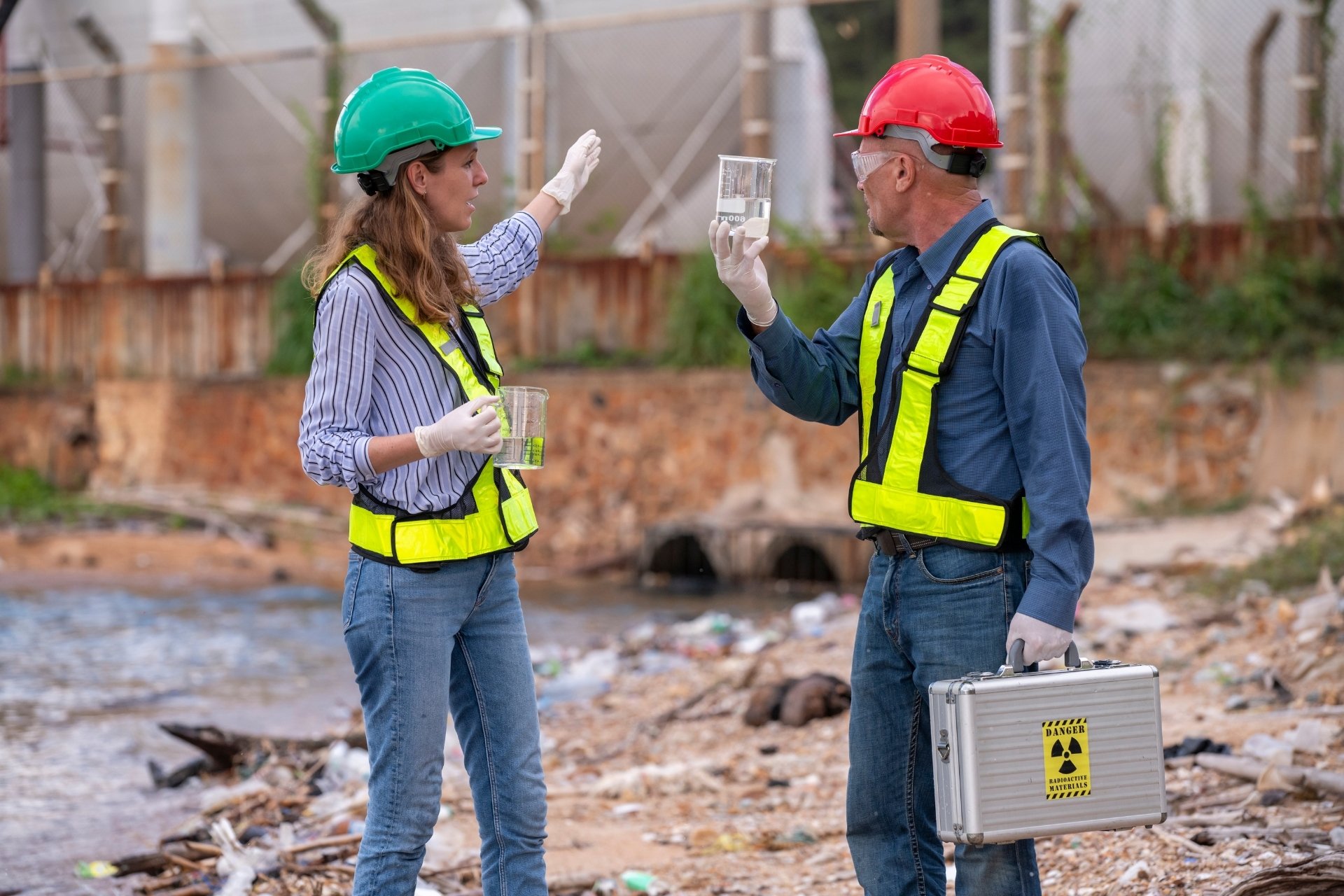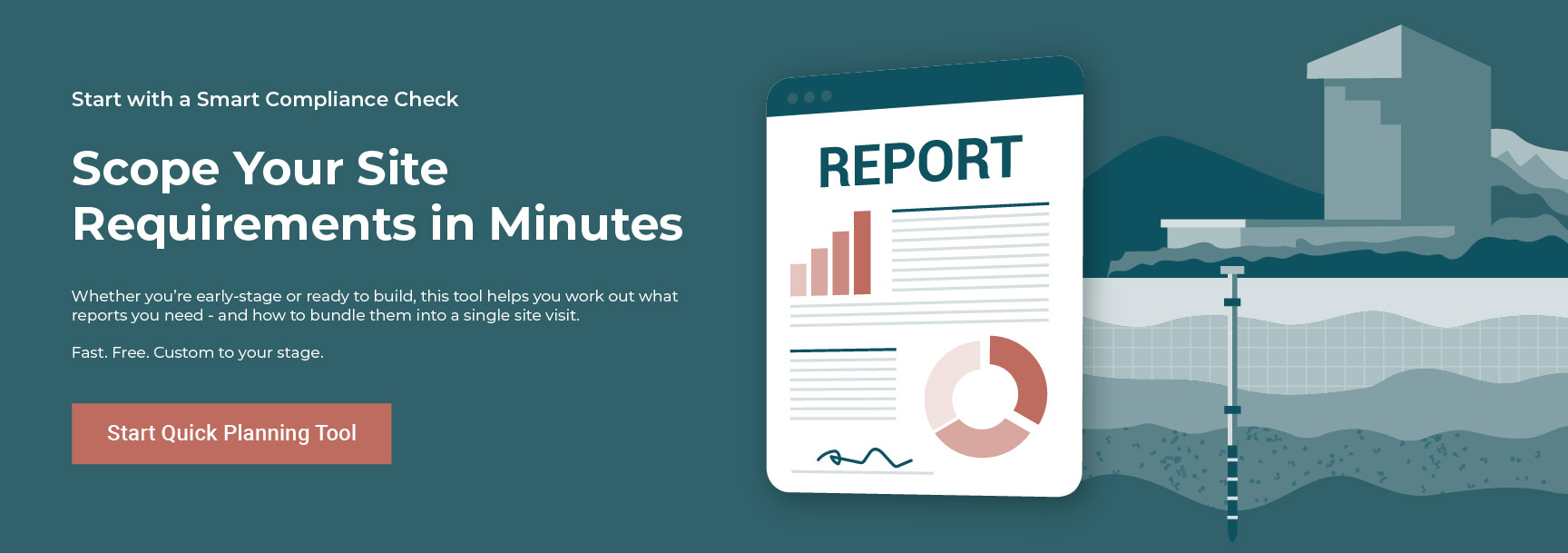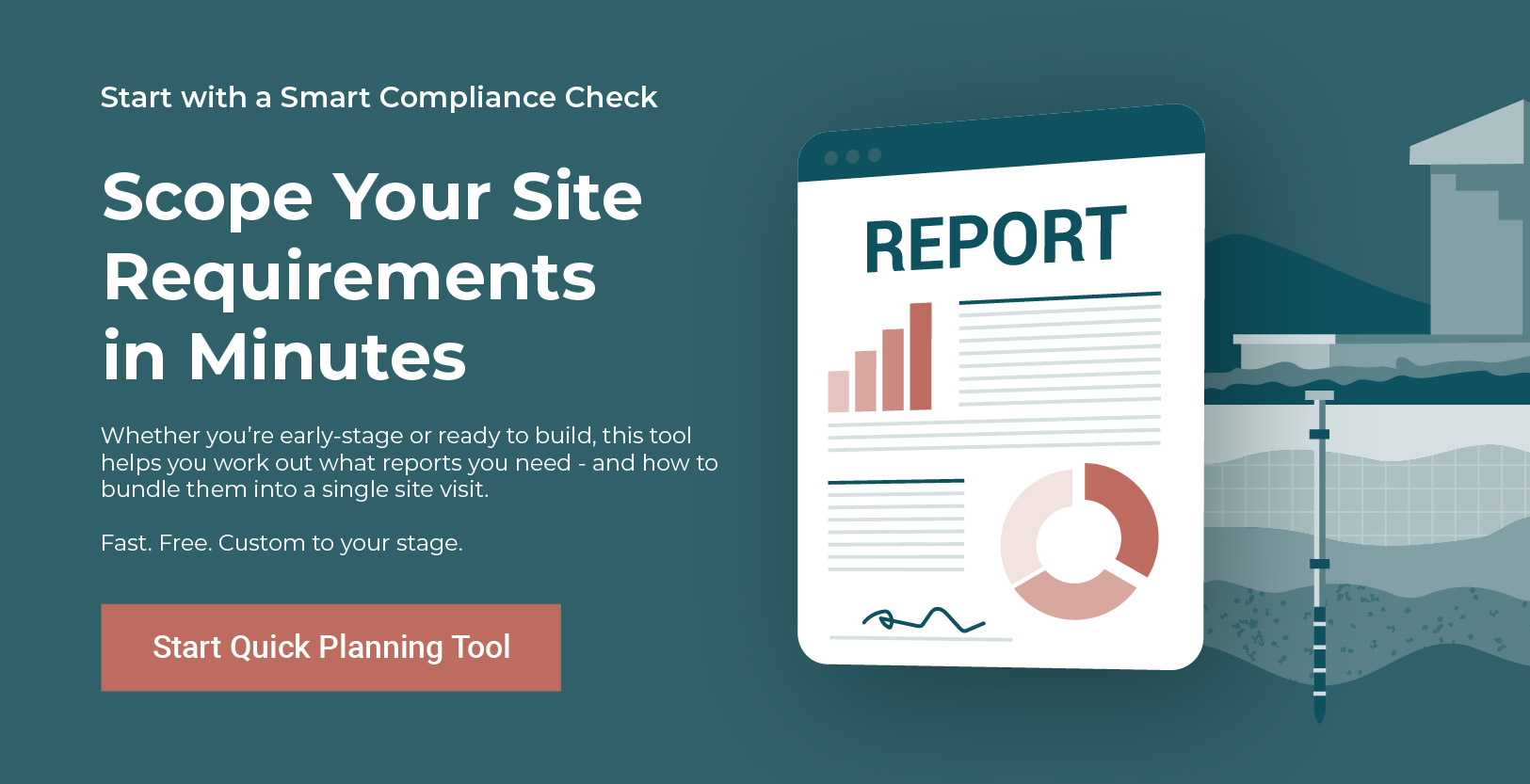When it comes to property development, infrastructure, or industrial operations, contamination isn’t just an environmental issue: it’s a compliance and liability issue. In Australia, regulators expect that contamination risks are identified, assessed, and managed in line with the National Environment Protection (Assessment of Site Contamination) Measure (NEPM, 1999, amended 2013) and relevant state guidelines.
A Contamination Risk Assessment (CRA) is the structured process used to understand whether contamination is present, how it might move through the environment, and what risks it poses to people, property, and ecosystems. Here’s what the process typically includes.
1. Site Characterisation and Data Collection
The first step is to build a complete picture of the site and its context. This involves:
- Desktop review – Historical land use records, aerial imagery, planning overlays, and regulatory databases are examined to identify potential contamination sources.
- Site inspection – A walkover survey allows consultants to ground-truth the desk study, noting any visible signs of contamination such as staining, odours, or waste materials.
- Environmental setting – Geology, hydrogeology, topography, and surrounding land uses are assessed, as these factors influence how contamination may migrate.
This phase answers the critical question: What could have happened here in the past that might affect the site today?
2. Contaminant Identification and Risk Pathways
Once potential sources are identified, the next step is to understand what contaminants may be present and how they could cause harm.
- Contaminants of concern – These can include hydrocarbons from fuel storage, heavy metals from industrial activity, asbestos from demolition materials, or emerging contaminants such as PFAS.
- Conceptual Site Model (CSM) – Consultants develop a source–pathway–receptor model that maps how contamination might move through soil, groundwater, surface water, or air, and who or what might be exposed (e.g. construction workers, future residents, nearby waterways).
- Guideline comparison – Concentrations of contaminants are compared against NEPM criteria and state-based guidelines to assess exceedances and potential health or ecological risks.
This step shifts the focus from what is present to what matters.
3. Risk Evaluation, Reporting and Recommendations
Finally, risks are evaluated, documented, and communicated in a format that meets regulatory expectations.
- Risk ranking – Each source–pathway–receptor linkage is rated for likelihood and consequence, producing a transparent risk profile (low, medium, or high risk).
- Compliance-focused reporting – Findings are presented in a structured report that satisfies local regulatory requirements, providing evidence for approvals or due diligence.
Practical recommendations – Depending on the risk profile, next steps may include remediation, management strategies (such as capping or containment), or ongoing monitoring.
The aim is not just to assess risk but to support informed decision-making, reduce liability, and protect both the project and the environment.
Start with a Smart Compliance Check
Scope Your Site Requirements in Minutes
Whether you're early-stage or ready to build, this tool helps you work out what reports you need and how to bundle them into a single site visit.
Fast. Free. Custom to your stage.
The Value of Early Contamination Risk Assessment
Undertaking a contamination risk assessment early can save projects significant time, cost, and regulatory headaches. It ensures compliance, builds trust with stakeholders, and reduces the risk of unexpected contamination delays.
At Nova Group Pacific, we deliver contamination assessments that are practical, technically rigorous, and aligned with Australian regulatory standards. Our goal is to provide clarity and confidence so your project moves forward safely and compliantly.
Need a CRA for your site? Contact our team today to discuss a tailored, compliance-first approach.

 Get Your Free Site Assessment
Get Your Free Site Assessment









 Get Your Free Site Assessment
Get Your Free Site Assessment









.png)








